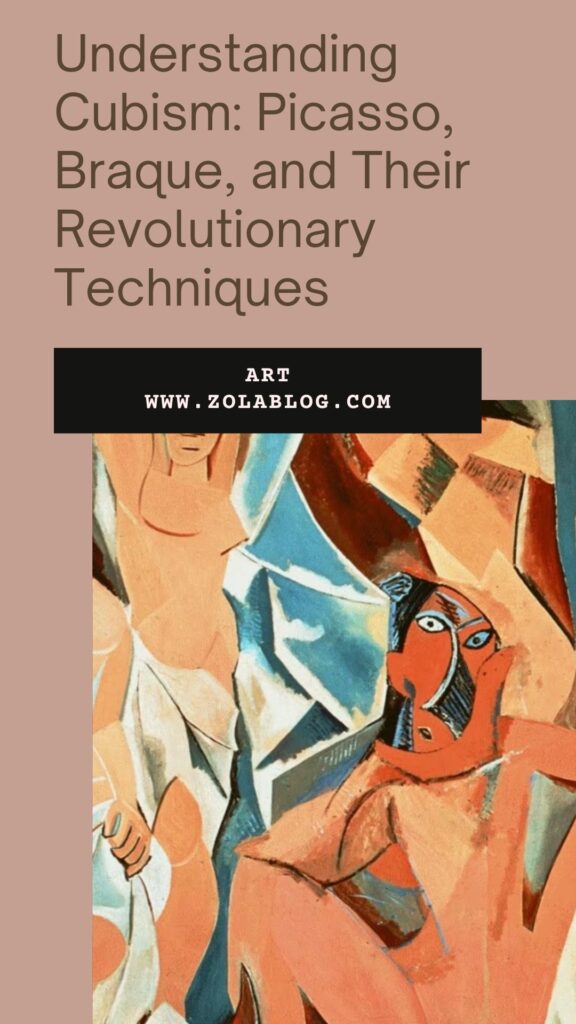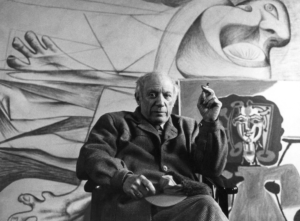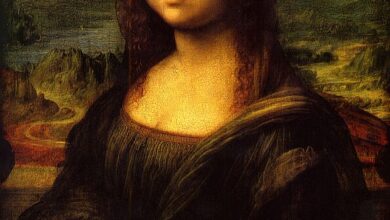Understanding Cubism: Picasso, Braque, and Their Revolutionary Techniques

Did you know that Cubism, one of the most influential art movements of the 20th century, started with a pair of artists deconstructing reality as we know it? Imagine seeing multiple perspectives of the same object all at once—this is the revolutionary vision Picasso and Braque introduced to the world. Cubism challenged the traditional representation of reality, offering a new way of seeing that fractured the world into geometric shapes and multiple viewpoints. This avant-garde movement, pioneered by Pablo Picasso and Georges Braque, forever altered the landscape of modern art.
Cubism emerged in the early 20th century, a time when artists were eager to break away from the conventions of the past. It was a response to the rapid changes in society, technology, and culture. Picasso and Braque’s collaboration marked the beginning of a radical transformation in art, leading to new forms and expressions that continue to inspire artists today.
Pablo Picasso and Georges Braque, the co-founders of Cubism, were both trailblazers in their own right, bringing unique perspectives to the movement. Their artistic partnership began in the early 20th century, driven by a shared desire to break free from traditional artistic constraints and explore new ways of seeing and representing the world.

Pablo Picasso, born in Spain in 1881, showed exceptional artistic talent from a young age. By the time he moved to Paris in 1904, he was already well-known for his Blue and Rose periods, which demonstrated his mastery of form and emotion. However, Picasso was not content with merely replicating reality; he sought to reinvent it. Influenced by the geometric simplifications of Paul Cézanne and the bold, abstract forms of African art, Picasso began to experiment with new techniques that would eventually lead to Cubism

Georges Braque, born in France in 1882, initially trained as a house painter and decorator, a background that gave him a unique approach to fine art. After studying at the École des Beaux-Arts, Braque was drawn to the Fauvist movement, known for its vibrant colors and bold brushwork. However, like Picasso, Braque was inspired by Cézanne’s emphasis on geometric forms and structure. His work began to move towards a more fragmented, analytical style, setting the stage for his collaboration with Picasso.
Convergence of Styles
Picasso and Braque’s paths converged in Paris, where they developed a close friendship and artistic partnership. They were both fascinated by the idea of deconstructing objects into geometric components and depicting them from multiple viewpoints. This shared vision led to the birth of Cubism, a movement characterized by its radical departure from traditional perspective and representation.
Paul Cézanne’s influence was crucial in their early explorations. Cézanne’s work emphasized the simplification of natural forms into geometric shapes and the use of color to model form rather than light and shadow. This approach resonated with Picasso and Braque, who saw in Cézanne’s paintings a new way to depict the complexity of the real world.

Another significant influence was African art, particularly the masks and sculptures from the African continent that Picasso encountered in Paris. These works, with their abstract forms and powerful, expressive qualities, inspired Picasso to incorporate similar elements into his own art. This influence is evident in his groundbreaking work, “Les Demoiselles d’Avignon,” which marks a significant departure from traditional Western art.
With their combined influences and innovative ideas, Picasso and Braque set out to revolutionize the art world. Together, they developed the visual language of Cubism, challenging the conventional notions of form, space, and perspective.
Deconstructing Reality – Analytical Cubism (1907-1912)
Analytical Cubism, the first phase of the Cubist movement, emerged between 1907 and 1912. This period was marked by a profound deconstruction of reality, where objects were broken down into their geometric components and reassembled in abstracted forms. Picasso and Braque led this exploration, challenging the conventions of perspective and representation that had dominated Western art for centuries.
Key Features of Analytical Cubism
- Fragmentation of Objects:
- Objects in Analytical Cubism are fragmented into geometric shapes, such as cubes, spheres, and cones. This fragmentation allows multiple aspects of the subject to be viewed simultaneously.
- Multiple Viewpoints:
- Instead of depicting objects from a single perspective, Picasso and Braque presented multiple viewpoints at once. This technique gave their works a dynamic quality, as if the viewer could see the object from various angles simultaneously.
- Muted Color Palette:
- Analytical Cubist paintings often feature a limited color palette, primarily consisting of browns, grays, and blacks. This subdued use of color focuses attention on the structure and form rather than on the superficial appearance of the subjects.
Examples of Analytical Cubism

Pablo Picasso’s “Les Demoiselles d’Avignon” (1907)
“Les Demoiselles d’Avignon” is often considered the seminal work of Cubism. In this painting, Picasso depicts five female figures with faces inspired by African masks and Iberian sculpture. The figures are fragmented and flattened, with sharp, angular forms that break away from traditional representations of the human body. This work marks a significant shift in Picasso’s style and sets the stage for the development of Analytical Cubism

Georges Braque’s “Violin and Candlestick” (1910)
In “Violin and Candlestick,” Braque dissects the objects into a series of overlapping planes and facets. The violin and candlestick are almost unrecognizable, transformed into an intricate web of geometric shapes. The painting exemplifies the Cubist approach to depicting multiple perspectives and the interplay between light and shadow, form and space.
Open Figuration
A notable concept in Analytical Cubism is “open figuration,” where the fragmented forms remain recognizable despite their abstraction. This technique allows viewers to perceive the essence of the object even as it is deconstructed into its geometric parts. The tension between abstraction and recognizability creates a dynamic viewing experience, inviting the audience to engage with the artwork on a deeper level.
Analytical Cubism represented a radical departure from traditional artistic methods. By fragmenting objects and presenting multiple viewpoints, Picasso and Braque redefined how reality could be represented in art. Their innovative approach challenged viewers to see the world in new and complex ways, laying the groundwork for the continued evolution of modern art.
Towards Abstraction – Synthetic Cubism (1912-1917)
Following the intensely analytical phase of Cubism, Picasso and Braque began to explore new directions in their work, leading to the development of Synthetic Cubism around 1912. This phase marked a shift towards greater abstraction and the incorporation of new materials and techniques, further expanding the boundaries of art.
Key Features of Synthetic Cubism
- Simpler Shapes:
- Synthetic Cubism is characterized by the use of larger, more simplified shapes compared to the fragmented forms of Analytical Cubism. The compositions are more abstract, with a focus on bold, flat areas of color and shape.
- Brighter Colors:
- The color palette in Synthetic Cubism is more vibrant and varied. Artists employed bright, bold colors to create contrast and emphasis within their compositions.
- Collage Elements:
- One of the most significant innovations of Synthetic Cubism was the incorporation of collage elements. Picasso and Braque began to use pieces of newspaper, wallpaper, sheet music, and other materials, integrating them into their paintings to create texture and depth.
Techniques and Innovations
- Texture and Incorporation of Lettering:
- By adding materials like newspaper clippings and wallpaper, Picasso and Braque introduced a new dimension of texture to their works. This technique blurred the line between painting and sculpture, making the surface of the artwork more tactile and engaging.
- The use of lettering and words in their compositions added a new layer of meaning and complexity. This approach allowed the artists to play with visual and textual elements, creating a richer, more multifaceted viewing experience.
Examples of Synthetic Cubism

Pablo Picasso McNay Art Museum, San Antonio, TX, US
Pablo Picasso’s “Guitar, Sheet Music, and Glass” (1912)
In “Guitar, Sheet Music, and Glass,” Picasso uses cut-out pieces of paper to construct a collage that represents a guitar. The use of different textures and materials, such as sheet music and colored paper, creates a layered effect that emphasizes both the flatness of the surface and the illusion of depth. This work exemplifies the Synthetic Cubist approach, combining abstraction with tangible, everyday objects.

Georges Braque’s “Fruit Dish and Glass” (1912)
Braque’s “Fruit Dish and Glass” showcases his skillful use of collage and mixed media. By incorporating pieces of wallpaper and newspaper, Braque adds a tactile quality to the painting. The simplified shapes and bright colors draw attention to the composition’s overall design rather than its individual components. This piece highlights the transition from the fragmented forms of Analytical Cubism to the more cohesive, abstract structures of Synthetic Cubism.
Impact and Legacy
Synthetic Cubism represented a significant evolution in the Cubist movement, pushing the boundaries of what art could be. The use of collage and mixed media opened new possibilities for artistic expression, influencing future movements such as Dada and Surrealism. By breaking away from purely painted surfaces and incorporating everyday materials, Picasso and Braque paved the way for new forms of artistic innovation.
As Synthetic Cubism evolved, it continued to challenge and redefine the conventions of art, inspiring countless artists and movements in the years that followed. The legacy of Synthetic Cubism can be seen in the works of later 20th-century artists who embraced abstraction, collage, and mixed media as essential tools in their creative arsenal.
Legacy of Cubism
Cubism, with its radical approach to form and perspective, had a profound and lasting impact on the art world. The movement not only transformed painting but also influenced various other art forms and movements, leaving an indelible mark on modern art.
Influence on Modern Art Movements
- Futurism:
- The Futurists, an Italian avant-garde movement, were greatly inspired by Cubism’s dynamic forms and fragmented perspectives. They sought to capture the energy and movement of modern life, often depicting speed, technology, and industrialization in their works. Cubist techniques allowed them to break free from static representations and explore the fluidity of motion.
- Abstract Expressionism:
- Cubism’s emphasis on abstraction and the deconstruction of forms laid the groundwork for Abstract Expressionism. Artists like Jackson Pollock and Willem de Kooning drew on Cubist principles to explore abstract forms and emotional expression. The Cubist focus on the underlying structure of objects influenced their approach to composition and form.
Influence on Other Art Forms
- Sculpture:
- Cubism significantly impacted sculpture, with artists like Alexander Archipenko and Jacques Lipchitz adopting its principles. These sculptors explored the fragmentation and reassembly of forms in three dimensions, creating works that challenged traditional notions of volume and space. Their sculptures often featured multiple viewpoints and geometric abstraction, echoing the innovations of Picasso and Braque.
- Architecture:
- The architectural world also felt the influence of Cubism. Architects like Le Corbusier and Walter Gropius incorporated Cubist ideas into their designs, emphasizing geometric forms, structural clarity, and the interplay of planes. Cubism’s exploration of space and volume resonated with modernist architects, leading to new approaches in building design and urban planning.
Broader Cultural Impact
Cubism’s legacy extends beyond the visual arts, influencing literature, music, and even fashion. The movement’s emphasis on deconstructing and reassembling elements inspired writers like Gertrude Stein and James Joyce, who experimented with fragmented narratives and multiple perspectives in their works. In music, composers such as Igor Stravinsky and Arnold Schoenberg explored dissonance and abstraction, paralleling the Cubist quest for new forms of expression.
Fashion designers, too, drew on Cubist aesthetics, incorporating geometric patterns and bold shapes into their creations. The movement’s impact on popular culture is a testament to its revolutionary approach to art and its ability to resonate across diverse creative fields.
Cubism, spearheaded by Pablo Picasso and Georges Braque, revolutionized the way we perceive and represent the world. By fragmenting objects and presenting multiple viewpoints, they broke free from traditional forms and paved the way for a new visual language in art. Their innovative techniques and concepts influenced numerous modern art movements, inspiring artists across various disciplines to explore abstraction, deconstruction, and new forms of expression.
The legacy of Cubism is evident in the continued evolution of art, architecture, and culture. Picasso and Braque’s pioneering work remains a cornerstone of modern art history, a testament to the power of innovation and the enduring impact of their revolutionary vision.




